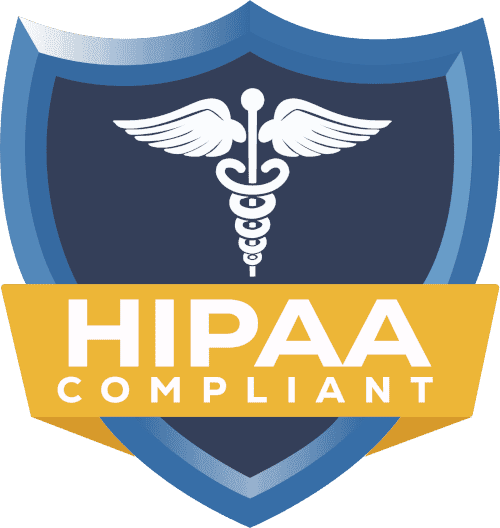How to Write Nursing Credentials: A Complete Guide for Healthcare Professionals

When you spend years earning your nursing education and certifications, displaying your credentials correctly matters. It is therefore appropriate to place nursing credentials where everybody can see it. Nursing credentials display one’s expertise, education, and specialized training. This guide will help you understand how to properly display your nursing credentials and why it matters in your professional practice.
What Are Nursing Credentials?
Nursing Credentials can be defined as the letters that follow a nurse’s name indicating her level of education, licensure, certifications, and professional achievements. These initials create a full view of your qualifications to peers, employers, and patients at any moment.
Analyzing the story told by the credentials; from educational background up to specialty certifications received over the career lifetime tells great detail about journey and expertise.
Understand BSN Meaning Medical Context
The BSN is the most typical academic credential in nursing. So, what exactly should the meaning of BSN be to medical professionals?
A BSN indicates that the person has finished a four-year bachelor’s degree in nursing and has received a fuller education over an associate degree. This degree includes:
- Leadership and management
- Research and evidence-based practice
- Community and public health
- Humanities and sciences.
Current trends in healthcare have led to the preference or requirement of a BSN by more hospitals and healthcare facilities to their nurses. This degree often unlocks further career advancement opportunities such as into managerial positions and specialized clinical areas as well as graduate education augmentation.
Nursing Credentials Order: The Proper Format
The proper nursing credentials order is essential in making communication clear and shows professionalism. The following is generally considered:
- Highest earned academic degree
- Licensure
- State designations or requirements
- National certifications
- Awards and honors
- Other recognitions
Let us simplify that with examples:
1. Highest Earned Academic Degree
Only list the highest nursing degree you earned; do not show all degrees. Common examples include:
- PhD in Nursing
- DNP in Nursing Practice
- MSN Master of Science in Nursing
- BSN Bachelor of Science in Nursing
- AD Associate Degree in Nursing
2. Licensure
Your nursing license goes after your highest degree:
- RN Registered Nurse
- LPN/LVN Licensed Practical/Vocational Nurse
- APRN Advanced Practice Registered Nurse
3. State Designations
Include any state-specific credentials:
- NP Nurse Practitioner
- Certified Nurse Midwife (CNM)
- Clinical Nurse Specialist (CNS)
- Certified Registered Nurse Anesthetist (CRNA)
4. National Certifications
Specialty Certifications from National Organizations:
- FNP-BC (Family Nurse Practitioner-Board Certified)
- CCRN (Critical Care Registered Nurse)
- CEN (Certified Emergency Nurse)
- OCN (Oncology Certified Nurse)
5. Awards and Honors
Include significant achievements:
- FAAN (Fellow of the American Academy of Nursing)
- FAANP (Fellow of the American Association of Nurse Practitioners)
6. Other Recognitions
Any Other Related Credentials.
Practical Examples of Nursing Credentials Order
Here are some examples showing proper credential placement:
- Sarah Johnson, BSN, RN
- Michael Chen, MSN, RN, CCRN
- Jennifer Williams, PhD, RN, FNP-BC, FAAN
- Robert Garcia DNP APRN PMHNP-BC
Look how this simple order lets us know fast each nurse’s qualifications from education level to specialized certifications.
Partial Nursing Credentials List
The nursing field offers numerous credentials across different specialties. Here’s a partial nursing credentials list organized by category:
Educational Credentials
- PhD (Doctor of Philosophy in Nursing)
- DNP (Doctor of Nursing Practice)
- EdD (Doctor of Education)
- MSN (Master of Science in Nursing)
- BSN (Bachelor of Science in Nursing)
- ADN (Associate Degree in Nursing)
- Nursing Diploma
Licensure
- RN (Registered Nurse)
- LPN/LVN (Licensed Practical/Vocational Nurse)
- APRN (Advanced Practice Registered Nurse)
Advanced Practice Roles
- NP (Nurse Practitioner)
- CNS (Clinical Nurse Specialist)
- CNM (Certified Nurse Midwife)
- CRNA (Certified Registered Nurse Anesthetist)
Nurse Practitioner Specialties
- FNP-BC (Family Nurse Practitioner-Board Certified)
- AGNP-BC (Adult-Gerontology Nurse Practitioner-Board Certified)
- PNP-BC (Pediatric Nurse Practitioner-Board Certified)
- PMHNP-BC (Psychiatric-Mental Health Nurse Practitioner-Board Certified)
- WHNP-BC (Women’s Health Nurse Practitioner-Board Certified)
Critical Care and Emergency
- CCRN (Critical Care Registered Nurse)
- CEN (Certified Emergency Nurse)
- TCRN (Trauma Certified Registered Nurse)
Medical-Surgical
- CMSRN (Certified Medical-Surgical Registered Nurse)
- ONC (Orthopedic Nurse Certified)
Pediatric
- CPN (Certified Pediatric Nurse)
- CPEN (Certified Pediatric Emergency Nurse)
Oncology
- OCN (Oncology Certified Nurse)
- AOCN (Advanced Oncology Certified Nurse)
Women’s Health
- RNC-OB (Registered Nurse Certified-Obstetrics)
- RNC-MNN (Registered Nurse Certified-Maternal Newborn Nurse)
This list barely brushes the surface of available nursing credentials since specialty certifications continue to evolve across ever more areas of healthcare.
When and Where to Use Your Nursing Credentials
Knowing when to use your nursing credentials is just as critical as knowing how to show them:
Professional Settings
- Email signatures
- Business cards
- Name badges
- Professional correspondence
- Legal documentation
- Professional memberships
- Academic publications
- Conference presentations
General Guidelines
- Use all appropriate credentials in formal professional contexts
- In less formal settings, you might use only your highest degree and license
- Follow your employer’s guidelines for name badges and email signatures
- Always include required legal credentials (like RN) on medical documentation.
Why Proper Credential Display Matters
Use of correct order of nursing credentials serves the following:
Professional Recognition
Your qualifications are instantly recognized by your colleagues, employers, and patients.
Legally Required
Some of them, like your nursing license, are legally required to be in certain documents.
Career Advancement
Proper display can highlight qualifications when applying for new positions or promotions.
Patient Trust
Qualification visibly displayed serves to enhance patient trust.
Professional Identity
Your journey and achievements make up your credentials and form a big part of your identity as a nurse.
Conclusion
Appropriately displaying your nursing credentials reflects professionalism and respect for the standards of nursing practice, although it may be considered a minor detail. Following the established order of nursing credentials ensures that anyone reading your resume understands clearly what you qualify and specialize in.
Whether you are a recently graduated nurse or an experienced practitioner with several advanced certifications, presenting your credentials correctly helps you put your best professional foot forward. Ensure that the initials of your nursing initials tell the story of education, experience, and commitment to nursing; ensure they tell it correctly.
Common Questions About Nursing Credentials
Should I list all my nursing degrees?
No, generally you should list only the highest degree. For example, if you have both a BSN and MSN, just write MSN. You may list both degrees if they are in different fields (e.g., an MSN and an MBA).
What about multiple certifications?
All current certifications should be listed with the most relevant to the current practice placed first.
Do expired credentials get listed?
These should not be listed. Only active, valid credentials must be included.
How to indicate multi-state licenses?
Generally, it would suffice to show that you are an RN without indicating the states of your licensure unless the issue is directly relevant to the context.
Should nursing students list credentials?
Nursing students should not use RN until licensed. The student can use designations like “BSN Student” or “SN” (Student Nurse) in applicable situations but never in a way that implies licensure.



















